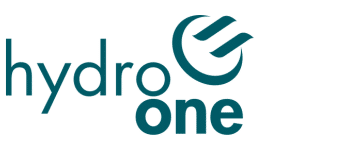Which of These Canadian Utilities is Our Nation’s Powerhouse?
Key takeaways
Utilities Offer Stability and Income: Canadian utility stocks like Fortis and Hydro One are reliable choices for investors seeking steady cash flow and consistent dividends, especially in uncertain economic times.
Renewable Energy is the Future: Companies like Brookfield Renewables and Capital Power are leading the shift toward green energy, positioning themselves for long-term growth as global clean energy adoption accelerates.
Regulated Models Drive Predictability: The heavily regulated nature of utilities provides predictable revenues and makes them resilient against economic downturns, but interest rates and government policies remain key factors to monitor.
3 stocks I like better than the ones on this list.With interest rates declining, many utilities are nearing 52-week highs after multi-year slumps. Although one could say the best time to buy the top Canadian utility stocks was when rates were at their peaks and prices were nearing 52-week lows, there is certainly still opportunity here.
The best utility stocks typically operate in a highly regulated environment, providing consistent revenues that lead to fewer surprises. In the end, this lowers the overall volatility of Canadian utility stocks, an element that is overlooked when it comes to an investment portfolio.
Lets go over some of the best utility stocks in Canada today. Keep in mind, these stocks are in no particular order.
What are the best utility stocks in Canada?
Reliable, dividend-focused utility giant
Fortis (TSE:FTS)

Fortis is one of North America’s largest utility companies, with operations spanning electric and gas distribution systems. Its core business revolves around regulated utilities, offering stable and predictable earnings. Fortis serves millions of customers across Canada, the U.S., and the Caribbean, and it has become a favorite among dividend investors for its steady growth and commitment to payouts.
P/E: 20.8
5 Yr Revenue Growth: 5.6%
5 Yr Earnings Growth: -3.0%
5 Yr Dividend Growth: 5.5%
Yield: 3.6%
High-growth, clean energy-focused utility
Capital Power (TSE:CPX)

Capital Power operates a mix of natural gas, coal, and renewable power facilities across North America. It has been shifting aggressively towards renewable energy, with a goal to achieve net-zero emissions by 2050. Known for its strong project pipeline, Capital Power offers both growth and income potential for investors.
P/E: 9.8
5 Yr Revenue Growth: 16.3%
5 Yr Earnings Growth: 48.2%
5 Yr Dividend Growth: 6.4%
Yield: 5.1%
Ontario’s electricity distribution powerhouse
Hydro One (TSE:H)

Hydro One owns and operates the vast majority of Ontario’s electricity transmission and distribution system. Its operations are entirely regulated, providing stable and predictable cash flow. The company benefits from a near-monopoly in its service area, serving homes, businesses, and industries across the province.
P/E: 26.7
5 Yr Revenue Growth: 5.5%
5 Yr Earnings Growth: 8.1%
5 Yr Dividend Growth: 5.4%
Yield: 2.4%
Global leader in renewable energy
Brookfield Renewables (TSE:BEP.UN)

Brookfield Renewables is one of the largest renewable energy platforms globally, with a portfolio spanning hydro, wind, solar, and storage facilities. It operates across multiple continents, generating stable cash flows from long-term power contracts. Brookfield is known for its ability to acquire undervalued assets and develop renewable infrastructure, making it a favorite for ESG investors.
P/E: –
5 Yr Revenue Growth: 8.2%
5 Yr Earnings Growth: -%
5 Yr Dividend Growth: 0.7%
Yield: 6.4%
Canadian utility stocks are often outstanding dividend stocks
These companies are established and have solid roots implanted in the industry. As such, they can reward shareholders in dividends, at least more so than high-potential growth stocks.
Don’t get me wrong; plenty of Canadian stocks in the utility sector provide growth, primarily with renewable energy. But if you’re looking for some stocks to build out the foundation of your portfolio, the stocks above are certainly a good starting point.
Are Canadian utility stocks a good investment?
Utility companies primarily deal with electric transmission, electricity generation, and energy infrastructure. For this reason, their cash flow is considered highly reliable. Why?
Well, everyone needs electricity. Next to heat, it’s probably one of the last utility bills we’d ever let go unpaid. As a result, utility stocks will more than likely form the core of many investors’ portfolios.
When times get rocky, and the market gets volatile, they’ve proven capable of weathering the storm. Look no further than the 2022 bear market, in which a company like Fortis had substantially lower drawdowns than the index. And as such, we’d view them as great investments in any economic circumstances.
There is one thing to know about most utilities, and that is the fact that they typically carry a lot of debt on the balance sheet. As a result, financial results can be put under pressure during periods of high interest rates.
However, as with many companies on the stock market, returns are made over the long term, and if you buy a strong utility company, it will come out of the situation just fine.
Are there strong Canadian utilities ETFs?
Right now, there are two primary ETFs when it comes to Canadian utilities. The iShares S&P/TSX Capped Utilities Index ETF (TSE:XUT) and the BMO Equal Weight Utilities Index ETF (TSE:ZUT).
BMO does have a covered call variant that utilizes a call option strategy to push out more income for its holders. This ETF trades under the ticker ZWU.
Its performance has been relatively poor over the years, and I feel that utilities provide more than enough income for investors that they shouldn’t need to seek out added strategies that limit the upside.
Alternatively, Hamilton does have a leveraged utility ETF, the Hamilton Enhanced Utilities ETF (TSE:HUTS), which could be a solid option for those who are bullish utilities and willing to add some leverage.
Related
Top Canadian Growth ETFs to Buy

Are Canadian utility stocks without risk?
For the most part, investors get a little bit too comfortable when selecting a utility company for their portfolio. Look no further than utility stock Algonquin Power (TSE:AQN).
Despite 70%~ of its business being regulated utilities, the company’s over-exposure to floating rate debt and extensive acquisition strategy caught up to it in 2022.
With the Bank of Canada and the Fed stating that rates would stay low for the foreseeable future, this was difficult to predict.
However, with the change in direction from policymakers and the fastest increase in rates in history, Algonquin was forced to cut the dividend numerous times, sell off its renewable portfolio, and overhaul management.
This shows that even reliable, cash flow-generating assets like regulated utilities are not without risk.
Overall, Canadian utility stocks are a great sector to build a core portfolio around
The regulated nature of the utility sector makes them outstanding investments during practically any economic circumstances.
Yes, there are plenty of other options for Canadians to choose from like Canadian Utilities Ltd (TSE:CU), Atco Energy (TSE:ACO.X), or even Emera (TSE:EMA), but this should at least give you a head start on your search in finding the best utility company that fits with your portfolio and risk tolerance.
I believe every portfolio should have a couple of these stocks, additions to what I call the “foundation” portion of your portfolio.
Those stocks you simply set and forget. In environments like this, you want to own businesses that have zero chance of shutting down. Think of stocks like Fortis, Dollarama, or even grocery store stocks like Loblaws.
I’ve owned Fortis for more than a decade now, and there is nothing better than having a stock sitting in your portfolio paying you reliable dividends with little effort on your part, even when the stock markets get rough.
These aren’t going to be world-beater in terms of total returns or growth potential, but we can reserve that for other portions of our portfolio.

